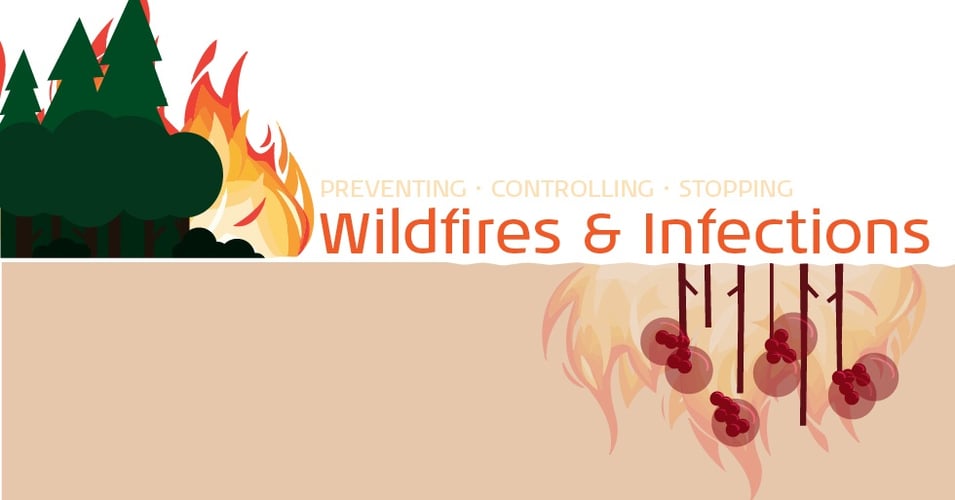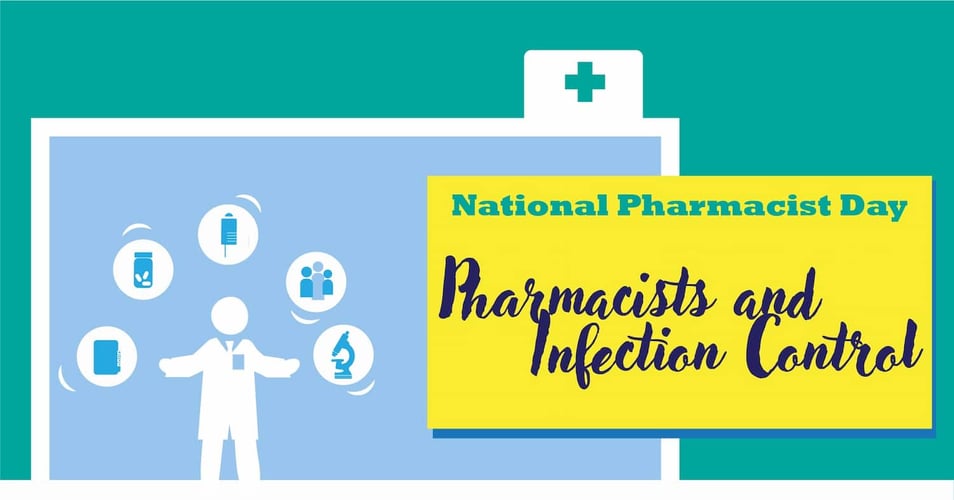Nursing Homes and Infection Control: The Most Common Infections

Elderly patients needing support for daily activities present unique challenges to the long-term care facilities who care for them. Today's post will conclude our series on nursing home facilities by focusing on the most common infections faced by their residents.
For many of the decades of nursing home facility inspections, the leading citation for quality was food safety. However, since 2010, infection rates have risen from the 8th most common citation to the number 1 position. Despite a serious lack of data in the area of infection control, conservative estimates for serious infections in long-term care facilities are from 1 - 3 million per year. Today's post will explore the most common infections, and the work being done to reduce their prevalence.
Most Reported Infection
Based on records of infection reporting and treatment, the most common infection in nursing facilities are UTIs, urinary tract infections. Outside of nursing homes, patients who develop a UTI while in a healthcare setting typically have an indwelling catheter, a device that increases the risk of an infection. In nursing homes, patients with catheters are also at greater risk of a UTI, but patients without them also get UTIs at a higher rate than the general hospitalized population. This is in part due to age-related changes in organ function and limited mobility, both of which make infection dangerous. Even more threatening is the fact that 50% of blood infections in nursing homes are related to a UTI - when the bacteria from the urinary tract makes its way to the bloodstream and then the entire body - and these infections are often fatal.
Most Lethal Infection
While UTIs are the most reported infections in nursing homes, pneumonia is the leading cause of hospitalization and death. In the general population, about 1.4/1000 people will get a lower respiratory tract infection/pneumonia (and more than 60% of seniors will be hospitalized for pneumonia in their lifetime). In a nursing home, 33 out of 1000 residents will become infected. Pneumococcus (Streptococcus pneumoniae) is the most common pathogen, and patients with feeding tubes have a substantially higher risk of becoming infected. Unfortunately, the symptoms of pneumonia may be masked in an elderly patient, who may not get a fever or may not tell anyone about pain and discomfort. The best diagnostic tool in these cases is a chest X-ray, but not every nursing home facility has access to these services in-house. Reduction of pneumonia cases will require a coordinated effort to train staff to recognize symptoms, improved access to imaging equipment, and an overall reduction in environmental contamination.
Fastest Growing Infection
Doubling in prevalence since 2000, Clostridium difficile infections (CDI) are responsible for a disproportionate number of deaths in patients over 65. It is fast becoming the leading cause of diarrhea in nursing homes, and it is estimated that over half of all hospital-acquired cases of CDI originate in a nursing home. A significant contribution to this growth in incidences is the use of antibiotics to treat other infections, such as UTIs. Because antibiotics kill most of the bacteria in the patient's gut, they also remove any competition for the highly resistant C. difficile. This gives the pathogen the opportunity to thrive and multiply, putting an already weakened patient in serious condition. One way to impact the proliferation of CDI is the judicious use of antibiotics (currently, data shows that only 50-60% of antibiotic use in nursing homes is appropriate) as well as the containment of the pathogen surrounding an infected patient so that it does not lead to an outbreak.
Most Preventable Infection
Sadly, one of the most preventable infections remains one of the leading causes of death in nursing homes: Influenza. Depending on the virulence of the strain, each year between 3,000 and 49,000 Americans will die from conditions relating to influenza - and 90% of those deaths are in patients over 65. Nursing homes present additional risks for transmission of this virus: Proximity to other patients, frequent interaction with staff and visitors, and infrequent disinfection of common areas can lead to an outbreak with fatal consequences. The solution to this infection is simple enough: An annual flu shot for staff, patients, and visitors. Studies show that in nursing homes, influenza rates go down the more patients and staff receive their annual flu shot.
Most Environment-Related Infection
Due to age-related changes to the epidermis, our body's physical barrier protecting us from environmental pathogens, older patients are particularly at risk of developing a skin or soft tissue infection. Approximately 10% of nursing home patients will develop a skin infection, with the most common being infection of a pressure ulcer (bed sore). The most common pathogens are Group A Streptococcus (GAS) and Methicillin-resistant Staphylococcus aureus (MRSA). GAS and MRSA can lead to severe and invasive infections involving multiple internal organs. Critical to the reduction of this infection is the reduction of the presence of the pathogens in the environment surrounding the patient, as both GAS and MRSA can survive over 6 months on dry inanimate objects. Skin tears, pressure ulcers, and incisions may be part of aging and medical treatment, but exposure to the pathogens that lead to infection can be minimized. Because up to 58% of nursing home residents are carriers of MRSA, acute care hospitals must also work to minimize environmental contamination as they treat patients from these facilities.
Looking Ahead
What is being done to improve infection prevention in nursing home facilities? Changes in reporting and data collection at acute hospitals over the past decade have demonstrated that tracking infections and creating an action plan can reduce healthcare-associated infections. Unfortunately, the reporting that has been so beneficial to acute care hospitals are just starting in nursing facilities. Last summer, participation in the National Health Safety Network (the federal agency that tracks infections in acute care hospitals) was no longer optional. This policy change requires nursing homes to track and report data through a secure, Internet-based surveillance program that standardizes tools and methodology, allowing facilities to monitor performance and create action plans.
The issue comes down to this: You can't have a solution without identifying the problem. You can't identify the problem without good data. You can't get good data without excellent surveillance... and excellent surveillance requires significant resources in infrastructure and staff time. Fixing the problem of limited resources for nursing homes could take decades, leaving an immediate need for interventions that could reduce environmental contamination and resulting HAIs.
Editor's Note: This post was originally published in June 2017 and has been updated for freshness, accuracy and comprehensiveness.
![EOScu Logo - Dark - Outlined [07182023]-01](https://blog.eoscu.com/hubfs/Eoscu_June2024/Images/EOScu%20Logo%20-%20Dark%20-%20Outlined%20%5B07182023%5D-01.svg)

![[infographic] Elderly Patients and HAIs Download and share!](https://no-cache.hubspot.com/cta/default/216314/interactive-178936108064.png)



